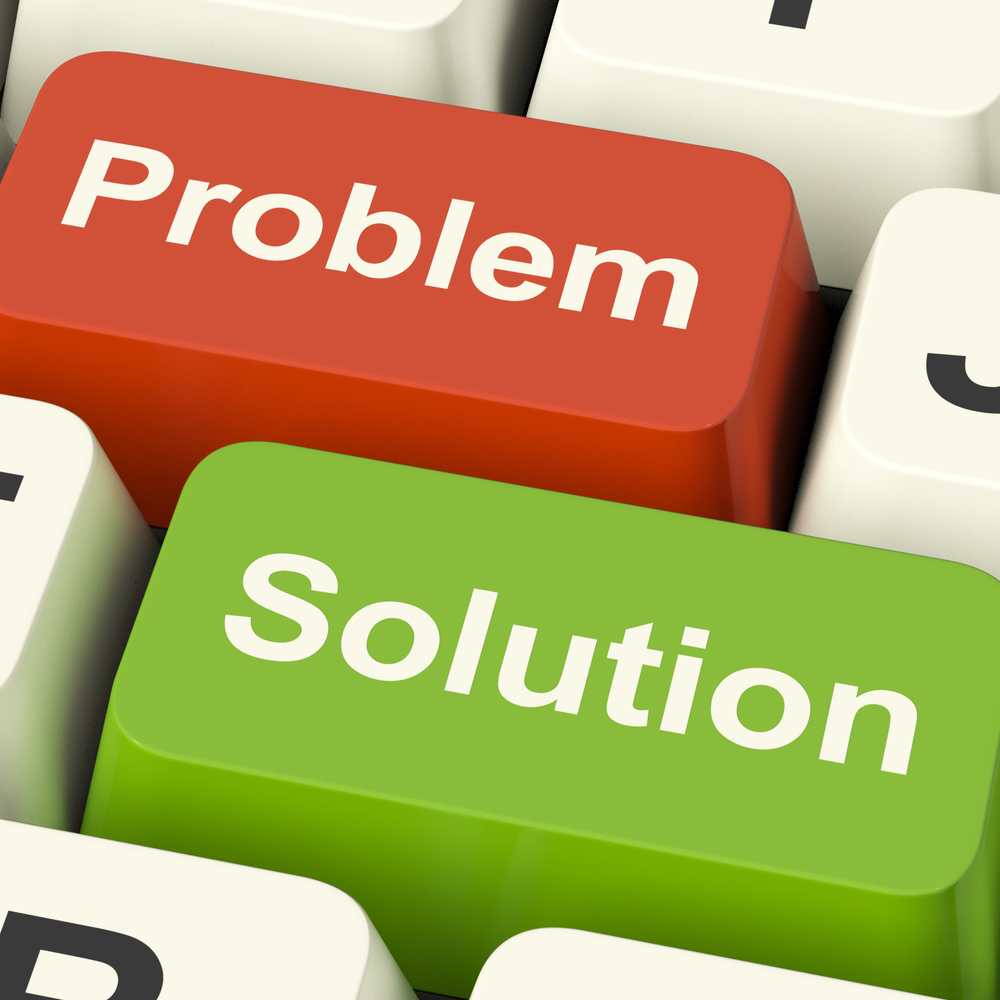 That title got your attention, didn’t it? It was meant to. After another successful round of patent application examinations for several clients in the last year, I thought others would like access to my proven patent acquisition methodology. Certainly, there’s a lot more than I can include in this post, and what is presented here should be considered to be only a high level introduction to my process. Moreover, every client requires focused attention to generate the desired patent protection, and not every business scenario mandates this comprehensive approach. But, for those situations where company leadership determines that strong patent protection is a key to achieving the desired business outcomes from investment in innovative products and technology, this methodology is not only recommended, it is required for success. Put simply, if you do the hard work
That title got your attention, didn’t it? It was meant to. After another successful round of patent application examinations for several clients in the last year, I thought others would like access to my proven patent acquisition methodology. Certainly, there’s a lot more than I can include in this post, and what is presented here should be considered to be only a high level introduction to my process. Moreover, every client requires focused attention to generate the desired patent protection, and not every business scenario mandates this comprehensive approach. But, for those situations where company leadership determines that strong patent protection is a key to achieving the desired business outcomes from investment in innovative products and technology, this methodology is not only recommended, it is required for success. Put simply, if you do the hard work
Need Broad Patents Fast? Try This.
Value-Enhancing Patent Prosecution Strategies (Part 1 of 4)
 In my role as the IP Strategist for a number of companies that do not employ in-house patent counsel, I am charged with making sure that my clients’ patenting efforts are in tune with their desired business outcomes. This means that instead of focusing on the drafting and prosecuting of patent applications that form the basis of most patent attorneys’ practices, I work at the front end of the patenting process to design patent strategies that will enhance my clients’ business value first and foremost. When alignment is created with business goals, subsequent patenting efforts will necessarily result in protection that matters to the value of the company. In this regard, I have a number of tools in my “Patent Strategy Toolbox” that I deploy regularly when developing patent prosecution recommendations. Notably, when I mention these tools to new clients,
In my role as the IP Strategist for a number of companies that do not employ in-house patent counsel, I am charged with making sure that my clients’ patenting efforts are in tune with their desired business outcomes. This means that instead of focusing on the drafting and prosecuting of patent applications that form the basis of most patent attorneys’ practices, I work at the front end of the patenting process to design patent strategies that will enhance my clients’ business value first and foremost. When alignment is created with business goals, subsequent patenting efforts will necessarily result in protection that matters to the value of the company. In this regard, I have a number of tools in my “Patent Strategy Toolbox” that I deploy regularly when developing patent prosecution recommendations. Notably, when I mention these tools to new clients,
IP Strategy is Increasing Focus at Innovative Companies: Here’s Why
 After more than 8 years, I can report that IP Strategy is an increasing focus at innovative companies, and there is a solid reason why this is so. By way of background, for many years, I have been part of a small minority of IP experts who advocate that companies desiring to maximize the value of their IP investments re-think the way they seek and obtain patents. In short, I and my IP Strategist peers urge companies to wrest control of their “IP destiny” from their legal service providers who have traditionally been seen as the primary drivers of the patenting process for their clients. Of course, readers of my regular ruminations know that my strongly held view is that “the
After more than 8 years, I can report that IP Strategy is an increasing focus at innovative companies, and there is a solid reason why this is so. By way of background, for many years, I have been part of a small minority of IP experts who advocate that companies desiring to maximize the value of their IP investments re-think the way they seek and obtain patents. In short, I and my IP Strategist peers urge companies to wrest control of their “IP destiny” from their legal service providers who have traditionally been seen as the primary drivers of the patenting process for their clients. Of course, readers of my regular ruminations know that my strongly held view is that “the
Product Companies Must Modify Patent Strategy When Adopting Innovation as Business Model
 I recently finished an IP Strategy engagement with major consumer products corporation, where I interfaced with the head of New Product Development and Innovation Strategy. This company is embarking on a major shift in the way it brings products to market. In short, the company is transitioning from one that introduces new products with incremental improvements into the market on a regular basis, to one that focuses more on innovation. For this client, this strategy will mean that a significant portion of its product development efforts will be focused on solving unmet and identifying emerging customer needs, with the ultimate goal of introducing truly innovative consumer products that will be successful in the marketplace.
I am sure that my client's new products will be found to be highly desirable to their consumers: the
I recently finished an IP Strategy engagement with major consumer products corporation, where I interfaced with the head of New Product Development and Innovation Strategy. This company is embarking on a major shift in the way it brings products to market. In short, the company is transitioning from one that introduces new products with incremental improvements into the market on a regular basis, to one that focuses more on innovation. For this client, this strategy will mean that a significant portion of its product development efforts will be focused on solving unmet and identifying emerging customer needs, with the ultimate goal of introducing truly innovative consumer products that will be successful in the marketplace.
I am sure that my client's new products will be found to be highly desirable to their consumers: the
Companies Create Risk by Leaving IP Strategy Out of Innovation
 I recently had to give bad news to a new client, the CEO of a successful global electronic hardware company. This CEO hired me earlier this year to help ensure that his company's upcoming innovations, which were the product of a several year turnaround program, were protected from competitive knock-offs. I have completed a couple of projects for the company to date, and he now wanted to discuss IP protection for a new product for the European market that would serve as a platform for later product spin-offs both there and in the US. This new product incorporated a number of highly innovative features and almost certainly could generate broad patent protection. Unfortunately, however, I had to inform my client that his company's important innovation could not be patented in Europe because the product launch date occurred several months ago.
While
I recently had to give bad news to a new client, the CEO of a successful global electronic hardware company. This CEO hired me earlier this year to help ensure that his company's upcoming innovations, which were the product of a several year turnaround program, were protected from competitive knock-offs. I have completed a couple of projects for the company to date, and he now wanted to discuss IP protection for a new product for the European market that would serve as a platform for later product spin-offs both there and in the US. This new product incorporated a number of highly innovative features and almost certainly could generate broad patent protection. Unfortunately, however, I had to inform my client that his company's important innovation could not be patented in Europe because the product launch date occurred several months ago.
While
Failure to Generate REAL Patent Protection: Keurig’s Story (Part 2)
 In Part 1 of this "Failure to Create REAL Patent Value: Keurig's Story," I asserted that the company's current business woes can be directly attributable to a flawed patent strategy. To summarize, as a result of the Keurig Green Mountain's failure to obtain durable patent rights on its coffee pods, there has been a proliferation of lower cost generic pods. Because these generic pods sell for about 40% less than the branded "K-Cup" pods, Keurig Green Mountain has and will continue to lose substantial revenue due to this increased competition, even while its coffee maker innovation remains wildly popular with consumers. The question then becomes how did the company fail to fully capitalize on the value its disruptive innovation created in the marketplace?
One can see what went wrong with Keurig Green Mountain's patent strategy by starting with the litigation record in which
In Part 1 of this "Failure to Create REAL Patent Value: Keurig's Story," I asserted that the company's current business woes can be directly attributable to a flawed patent strategy. To summarize, as a result of the Keurig Green Mountain's failure to obtain durable patent rights on its coffee pods, there has been a proliferation of lower cost generic pods. Because these generic pods sell for about 40% less than the branded "K-Cup" pods, Keurig Green Mountain has and will continue to lose substantial revenue due to this increased competition, even while its coffee maker innovation remains wildly popular with consumers. The question then becomes how did the company fail to fully capitalize on the value its disruptive innovation created in the marketplace?
One can see what went wrong with Keurig Green Mountain's patent strategy by starting with the litigation record in which
Failure to Generate REAL Patent Protection: Keurig’s Story (Part 1)
 Innovators--be they individuals or corporations--frequently view patent protection as the key to capturing value from the time and money invested in creating a successful product. Indeed, conventional wisdom dictates that a patent covering a true innovation will make it difficult, if not virtually impossible, for a competitor to legally provide a knock-off product to the same customer. Time and again, however, a successful product introduction will be followed by appearance in the market of a substitute product that provides the same consumer benefit but that also does not infringe the innovator's patent rights. In such a case, the innovator is not only faced with competition, it must now play in an increasingly price-eroded market, where such price erosion is likely more painful for the innovator because it made an investment that the knock-off company did not make.
A familiar example of a product where the
Innovators--be they individuals or corporations--frequently view patent protection as the key to capturing value from the time and money invested in creating a successful product. Indeed, conventional wisdom dictates that a patent covering a true innovation will make it difficult, if not virtually impossible, for a competitor to legally provide a knock-off product to the same customer. Time and again, however, a successful product introduction will be followed by appearance in the market of a substitute product that provides the same consumer benefit but that also does not infringe the innovator's patent rights. In such a case, the innovator is not only faced with competition, it must now play in an increasingly price-eroded market, where such price erosion is likely more painful for the innovator because it made an investment that the knock-off company did not make.
A familiar example of a product where the
How Startup Patent Filing is Different
 The prevailing view of patent experts who advise innovators--be they individuals or companies--it that patent filings should occur as early as possible. This advice, which is even more prevalent now that the US has moved to a "first to file" system, exacerbates the significant problem of worthless patents that I have written about previously. To summarize, by "worthless," I mean that the innovator's patents will not cover anything that consumers desire to buy. Logic thus dictates that patents will be irrelevant to the startup, as well as expensive wastes of time, unless protection aligns with a validated customer demand for the innovator's product or technology.
This is where a key difference falls out between the patent filing strategies for established companies and startups where each is developing innovative products or technology. The former already have products in the market and customers that
The prevailing view of patent experts who advise innovators--be they individuals or companies--it that patent filings should occur as early as possible. This advice, which is even more prevalent now that the US has moved to a "first to file" system, exacerbates the significant problem of worthless patents that I have written about previously. To summarize, by "worthless," I mean that the innovator's patents will not cover anything that consumers desire to buy. Logic thus dictates that patents will be irrelevant to the startup, as well as expensive wastes of time, unless protection aligns with a validated customer demand for the innovator's product or technology.
This is where a key difference falls out between the patent filing strategies for established companies and startups where each is developing innovative products or technology. The former already have products in the market and customers that
The Medical Device Patent Strategy Problem-Case Study
 An IP Strategist like myself spends considerable time "Monday Morning Quarterbacking" patent strategy for medical devices and other inventions for the purposes of valuation, commercialization and otherwise. In this regard, I am frequently asked to review medical device patents to provide my opinion regarding claim coverage in relation to commercialization potential. Most of these reviews indicate that the medical device patent fails to create a scope of protection sufficient to justify the investment needed to fully realize the value of a new market opportunity. Alternatively, I will provide a "freedom to operate" opinion to a competitor that wishes to enter the market with a non-infringing alternative but which nonetheless leverages the key insights that formed the basis of the patented medical device innovation.
An IP Strategist like myself spends considerable time "Monday Morning Quarterbacking" patent strategy for medical devices and other inventions for the purposes of valuation, commercialization and otherwise. In this regard, I am frequently asked to review medical device patents to provide my opinion regarding claim coverage in relation to commercialization potential. Most of these reviews indicate that the medical device patent fails to create a scope of protection sufficient to justify the investment needed to fully realize the value of a new market opportunity. Alternatively, I will provide a "freedom to operate" opinion to a competitor that wishes to enter the market with a non-infringing alternative but which nonetheless leverages the key insights that formed the basis of the patented medical device innovation.
To this end, a medical device investor recently engaged me to conduct a preliminary review of a
Who Needs a Patent?
 My response to the question posed in the title of this post is typically: “the only person who needs a patent is a patent attorney.” Indeed, if a patent attorney fails to convince clients like you that they need to obtain a patent, she will quickly lose her livelihood. You should therefore be skeptical if a patent attorney recommends that you move forward with a patent without also advising you to first fully evaluate your business model, your go-to-market strategy and the competitive landscape and determining along with you how the available patent protection may allow you to realize your company's revenue and exit goals.
My response to the question posed in the title of this post is typically: “the only person who needs a patent is a patent attorney.” Indeed, if a patent attorney fails to convince clients like you that they need to obtain a patent, she will quickly lose her livelihood. You should therefore be skeptical if a patent attorney recommends that you move forward with a patent without also advising you to first fully evaluate your business model, your go-to-market strategy and the competitive landscape and determining along with you how the available patent protection may allow you to realize your company's revenue and exit goals.
This is not to say that patents are never the right thing or even often the right thing for entrepreneurs. To the contrary, examples abound for companies where patents served as a primary means of


